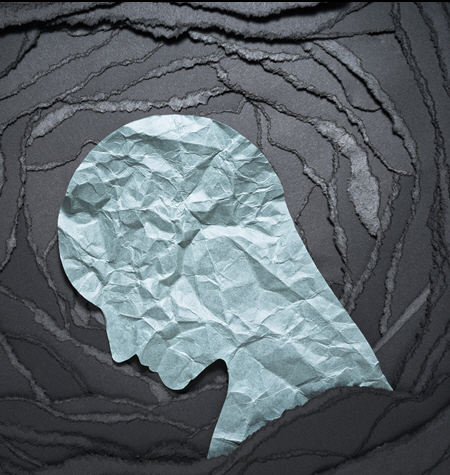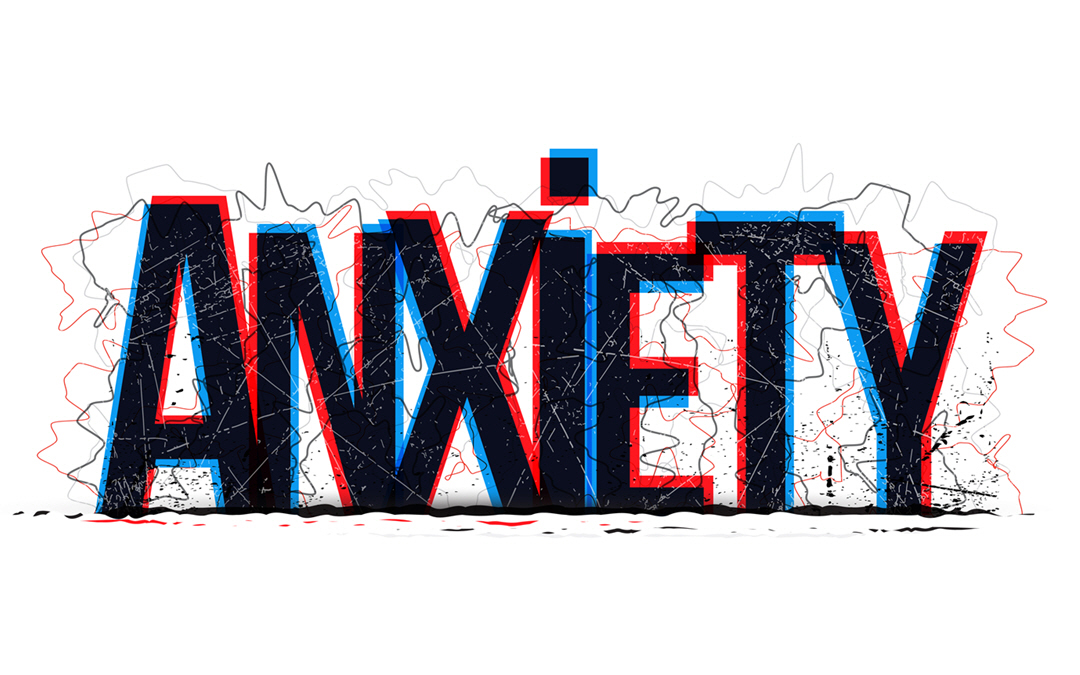Considering anxiety is one of the most common mental illnesses experienced…
…affecting over 40 million Americans, it’s important to identify and correct misinformation about the illness. Time after time clients come into my office and make the same set of comments about their anxiety:
“It comes out of nowhere, there really isn’t a cause.”
“I feel anxious.”
“It’s not anxiety, it’s depression/OCD/ADHD.”
“(Such and such) gives me anxiety.”
My goal here today is to help you understand why these are myths, things thought to be true by most people, but are in fact false. It’s best to understand why you struggle the way you do, how anxiety can take hold and present itself in your life, and why it’s actually easier to treat than people may think.
There is no cause…
Something to understand about internal struggles is that there is ALWAYS a cause, even if we can’t see it or don’t know what it is yet. Anxiety tends to have mostly internal causes and people with anxiety almost always have a big disconnection from themselves. Because anxiety can be very unpleasant to experience, most people who struggle with it subconsciously disconnect themselves from their internal experiences; they aren’t always fully aware of thoughts and emotions. As a result, those who struggle with anxiety can become very overwhelmed and confused as to what’s happening when it flares, and this at times can induce a panic response. Some people also report a steady baseline of anxiety that is always present, especially those with generalized anxiety, but even this has a cause.
Some possible causes:
Overactive amygdala (part of the brain that houses fear response)
A childhood with unpredictable parents
A childhood with anxious parents
A childhood with a parent who struggles with addiction
Genetics
Biological heightened sensitivity to emotions
Distorted thought processes
Low self-esteem, poor perception of self
Trauma (physical, sexual, emotional, and/or psychological)
Many of the above we can’t really see, but they play a role in how we experience life. One way to diagnose the origins of a person’s anxiety is through a process of elimination. We go through a client’s history to determine if visible causes are present such as trauma and childhood history. If there isn’t anything remarkable there, we move into exploring the person’s parents, family history of mental illness, even family history of trauma.
Epigenetics is the study of how DNA can be changed due to trauma or other behavioral and environmental stimuli. This changed DNA can also be passed down during conception and you ultimately inherit the trauma of generations past if they did not address or work to change the DNA back. (Note: this does not change DNA sequencing, but changes gene activity, how the gene is expressed.) There’s a good book on this, It Didn’t Start With You by Mark Wolynn, that helps to understand why you may struggle with anxiety without ever having endured or experienced adverse events.
 I Feel Anxious
I Feel Anxious
No, you don’t, and here’s why. I have to help clients differentiate between what they feel and what they experience quite often.
“Anxiety” is used to describe a set of symptoms, it is not a feeling; the feelings associated with anxiety are fear and worry. So, one helpful trick to ask yourself when you experience anxiety symptoms (racing thoughts, increased heart rate, fidgeting, restlessness, difficulty concentrating, sweating, shallow breathing) is to ask yourself if there is anything you are fearful of or worried about.
Caveat: there is often an anticipatory nature to anxiety, which means we are usually thinking of something in the near or distant future which is eliciting the symptoms above. The reason I encourage clients to move away from using the statement “I feel anxious” is because it tends to become a blanket statement for a wide variety of emotional experiences, limiting further insight or exploration into the underlying emotions. This then contributes to and exacerbates the disconnection within oneself. “I’m experiencing anxiety symptoms,” can prompt exploration into when they started, where they came from, what was happening internally and externally just before. When we can label anxiety an experience rather than a feeling, we are less likely to identify with it. I can’t tell you how many clients have identified with their anxiety, making it harder to treat and let go of.
There are tons of emotions that you could be feeling at any given point in time, anxiety isn’t one of them. It also often gets confused with excitement and nervousness because they share similar physical and biological characteristics, but again, it’s not an emotion. Knowing this, it may help to better distinguish between fear and excitement. You may also find that forcing yourself to dig past the label of anxiety allows you to better understand yourself and what you feel.
It’s not anxiety, it’s __________
Fill in the blank.
People often describe feeling depressed, struggling with obsessive compulsive disorder (OCD), or ADHD, but my job is to help them differentiate between these and get a better idea of what’s causing particular symptoms.
Anxiety actually has a spectrum of experiences. Along the anxiety spectrum are the following:
Generalized anxiety
Social/Performance Anxiety
Agoraphobia/Specific phobia
Separation Anxiety
Panic Disorder
OCD
PTSD (post-traumatic stress disorder)
When we examine a person’s symptoms, it’s helpful to be able to distinguish among these, but most of the time symptoms due overlap, so it can be difficult for any person to self diagnose. It takes a trained clinician to be able to rule out various diagnoses.
Anxiety can become so intense and so pervasive in a person’s life that they do withdraw; avoidance is the biggest behavioral adaptation to help temporarily alleviate symptoms of anxiety. A person will start to avoid people, places, situations, events, etc. to not experience the anxiety they associate with those things. Once a person isolates and withdraws enough, they start to experience symptoms of depression. Because anxiety can also interfere with one’s ability to enjoy the things they do, it can leave one feeling as though they experience anhedonia, a symptom of depression.
Along with numerous other symptoms, anxiety comes with racing thoughts, oftentimes trying to plan out scenarios or create a script for life that avoids having to experience anxiety. This mirrors the inattention and distractibility of someone experiencing ADHD/ADD. These racing thoughts tend to have a particular function (purpose) and theme and have been a means of hypervigilance or escape planning often seen in people who have experienced some sort of trauma as a child.
Before you try to diagnose yourself, get the opinion of a trained professional. The course of treatment varies depending on what the prevailing issue is and it’s best to invest in an accurate course of therapy than to waste time and money attacking one problem and finding that this only put a bandaid on symptoms.
 Such and such gives me anxiety
Such and such gives me anxiety
This one I hear way too often. “My mom gives me anxiety,” “Driving gives me anxiety,” “Large crowds give me anxiety,” etc., etc., etc.
Our brains are incredibly adept and sophisticated…for the most part. They are still very primal and reptilian in many ways. For one, they are primed for survival. The brain knows how to associate things and find patterns, all in an effort to keep us safe and free of harm, pain, and suffering. However, as humans we have evolved and don’t need to focus so much on our physical safety (such as wooly mammoths and saber-toothed tigers), so the brain ended up focusing on emotional safety.
Remember, anxiety is fear and worry that is uncontrollable, which means our brain is sensing that there is something to fear or worry about when we are experiencing anxiety. The brain also can’t always tell the difference between real or imagined. This is why visualizations and guided meditations work so well to help calm us. This backfires, though, when we imagine or anticipate an uncomfortable situation, or a potential confrontation, or failing at life and winding up broke, homeless, and alone. Just thinking of those scenarios elicits anxiety. It did for me as I wrote it!
People hate experiencing anxiety so much that when it rears its head, we try to suppress it, shut it down, force it to go away without ever listening to what it is trying to tell us. No person, no place, no thing can give you anxiety, you often experience it based on fearing what you will feel when in those places. Essentially, anxiety morphs into fear of feeling. If you’re constantly around someone who berates you, judges you, criticizes you, you’ll most likely experience anxiety when you know you’ll have to be around them, especially if you’re unaware of how you feel when with them. Many times, people don’t want to acknowledge that they’re hurt by people they love, so they tend to continuously place themselves in situations to feel really uncomfortable emotions, then try desperately to not feel them, breeding anxiety. You’re trying to control for an outcome, trying to not feel things, fearing feeling these things, and don’t have the skills to cope, set boundaries, or walk away.
So then what is anxiety?
I hope I’m breaking this down enough. Anxiety occurs because of how we perceive the events in our life. Traffic is just traffic. To one person, it’s time to catch up on podcasts and relax. To another, it will make them late, it makes them feel stuck and powerless, thus two people having completely different experiences to the same event. Anxiety is often caused by internal triggers, the way we perceive others, the world, events, places, and ultimately emotions. The clients who struggle with anxiety most often are ones who are not well informed of emotions and how to handle them, so they fear feeling altogether.
People with anxiety tend to prefer a steady, stable, status quo life. They often exert so much effort trying to keep peace and not rock the boat. They tend to not assert themselves or set boundaries, and don’t seek (natural) highs to keep from feeling lows. This is where the issues come in, this is maladaptive and tends to build up within the body, leaving clients shaking their legs in my office, biting their nails, picking at scabs, pulling out hair, overeating, abusing substances, etc. My goal is to help you identify healthy ways to exert and maintain control in your life through better understanding yourself, your emotions, the way you perceive the world around you.


